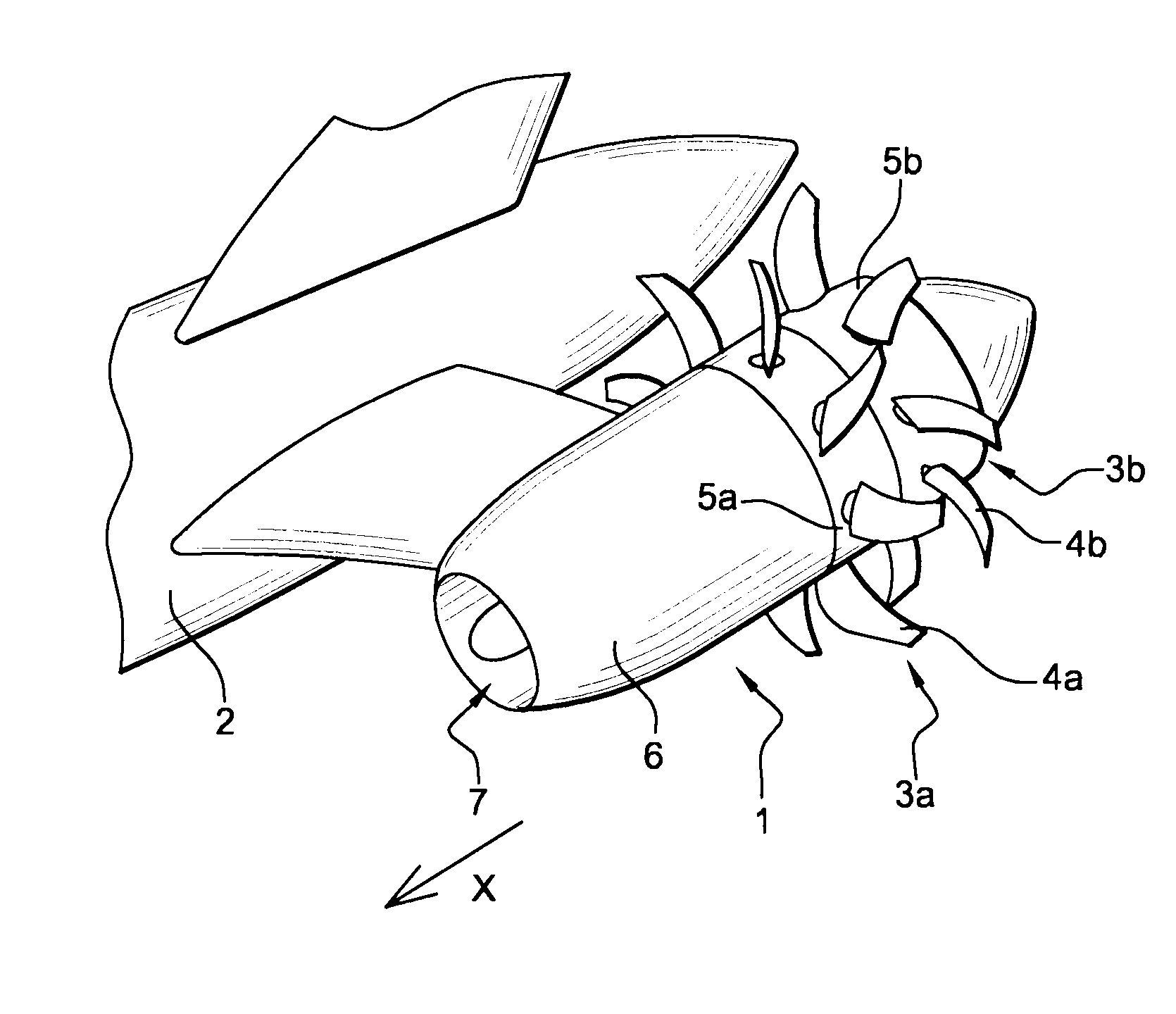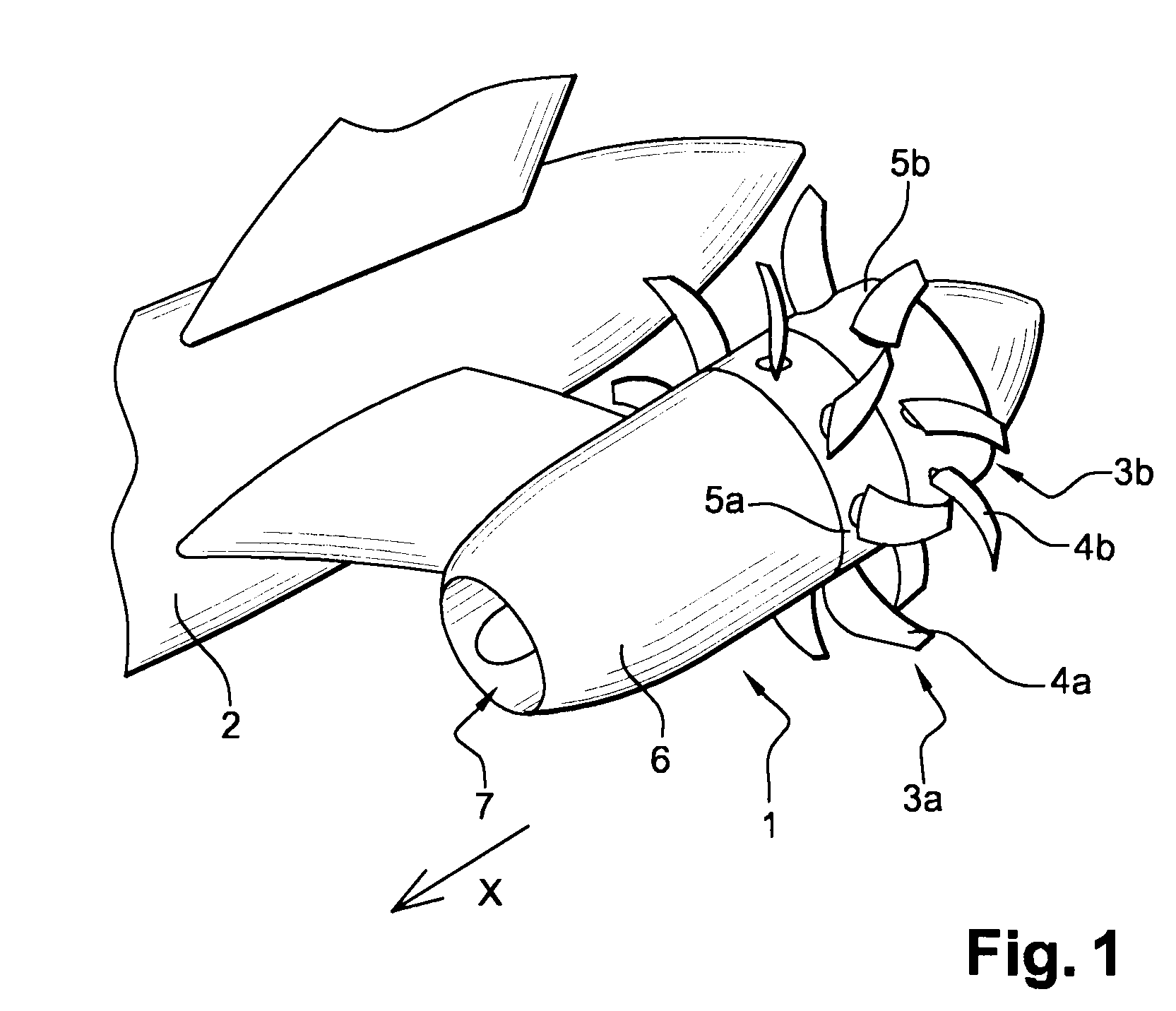Electric deicing device for propfan-type propeller blades
- Summary
- Abstract
- Description
- Claims
- Application Information
AI Technical Summary
Benefits of technology
Problems solved by technology
Method used
Image
Examples
Embodiment Construction
[0039]The invention is destined to be used in an airplane propulsion unit 1, for example of the type called “propfan”, as shown in FIG. 1. Such propulsion units are envisaged for future aircraft. In the example of implementation illustrated here, two propfan propulsion units 1 are attached by engine pylons, on both sides of the rear part of an aircraft fuselage 2.
[0040]Each propfan propulsion unit 1 comprises here two counter-rotating rotors 3a, 3b each comprising a set of blades 4a, 4b, which are equidistant and arranged at the rear of the propulsion unit 1. The blades 4a, 4b of each rotor 3a, 3b protrude from an annular crown 5a, 5b, which is mobile with this rotor, the outer surface of which is located in the continuity of the outer envelope 6 of the propulsion unit.
[0041]As shown schematically in FIG. 2 the propfan propulsion unit 1 comprises an air inlet 7 that supplies a turbomachine 8. This turbomachine 8 comprises an axial portion driven in rotation when the turbomachine is ...
PUM
 Login to View More
Login to View More Abstract
Description
Claims
Application Information
 Login to View More
Login to View More - R&D
- Intellectual Property
- Life Sciences
- Materials
- Tech Scout
- Unparalleled Data Quality
- Higher Quality Content
- 60% Fewer Hallucinations
Browse by: Latest US Patents, China's latest patents, Technical Efficacy Thesaurus, Application Domain, Technology Topic, Popular Technical Reports.
© 2025 PatSnap. All rights reserved.Legal|Privacy policy|Modern Slavery Act Transparency Statement|Sitemap|About US| Contact US: help@patsnap.com



